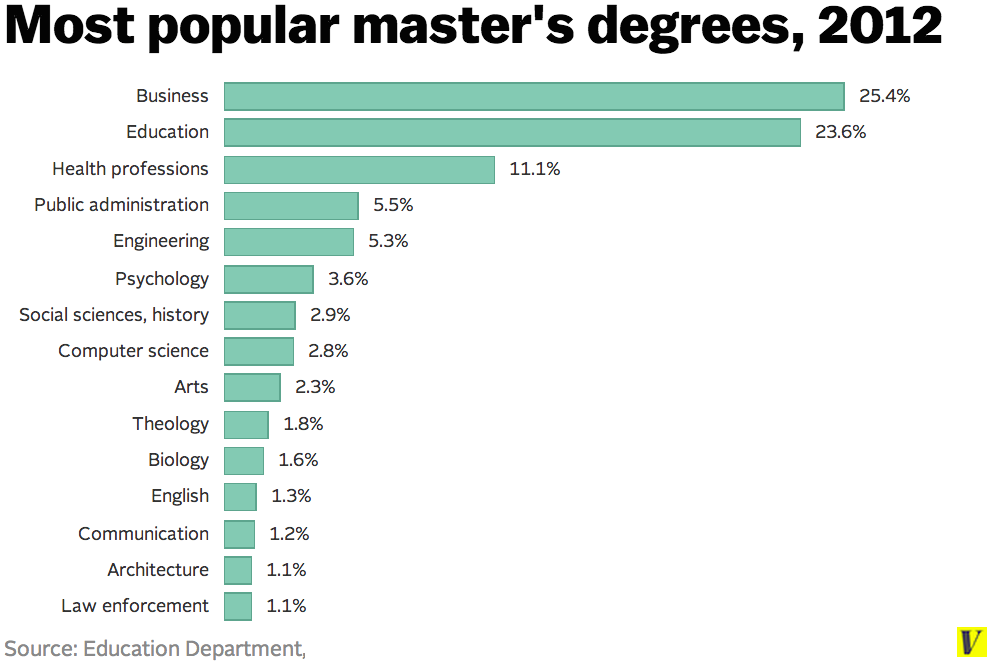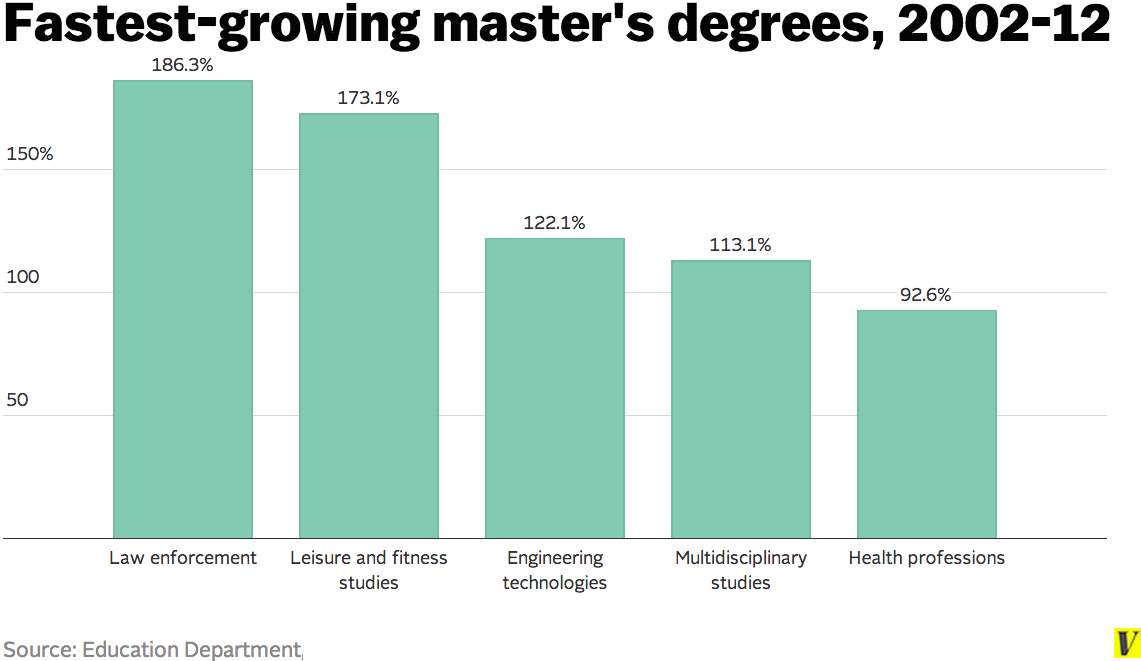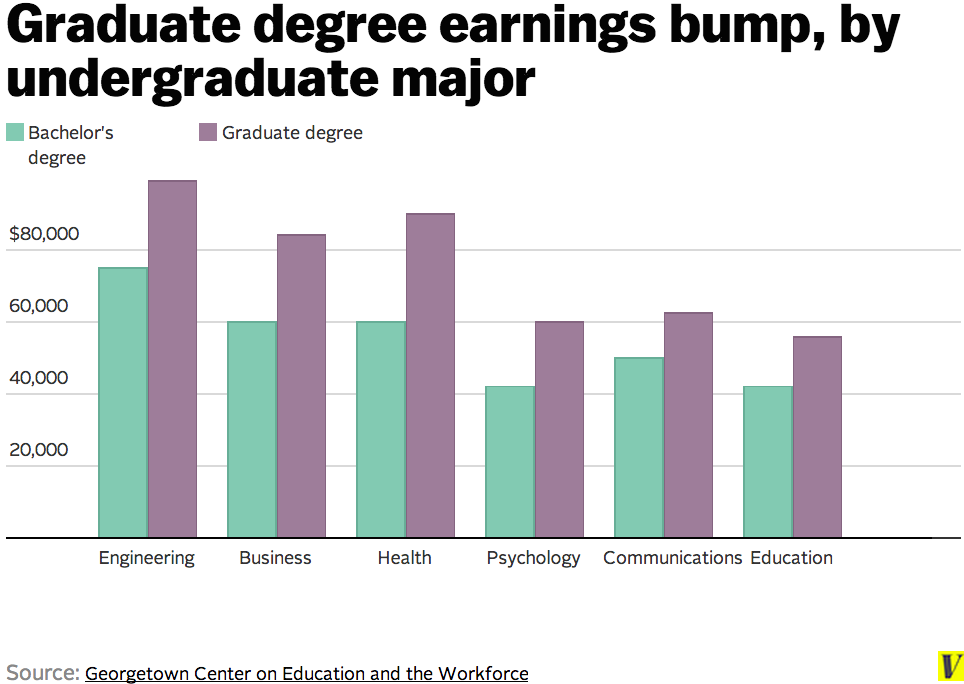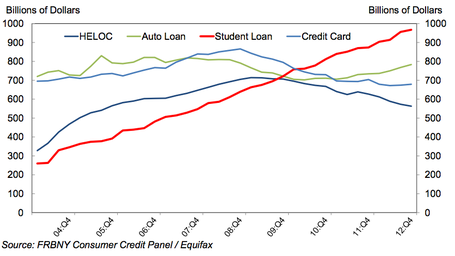Master's degrees are as common now as bachelor's degrees were in the '60s

It's graduation time, an occasion for commencement speakers, academic regalia, and celebrating achievement. One achievement has become a lot more common over the past few decades: the master's degree, the fastest-growing college credential in the US.
More than 16 million people in the US — about 8 percent of the population — now have a master's, a 43 percent increase since 2002.

And as master's degrees have grown, so has the debt that comes with them. The typical total debt for a borrower with an undergraduate and graduate degree is now more than $57,000, up from $40,200 in 2004. (This includes medical and law degrees.)

But the growth hasn't been spread around evenly. The story of the past four decades isn't just about how master's degrees became as common now as bachelor's degrees were in the 1960s. It's about how the US has redefined which fields need or reward postgraduate study.
In 1970, the 15 most popular master's degrees — which made up 94 percent of all master's degrees given that year — split up their market share like this:

Education was dominant, and many of the other master's degrees were in traditional academic fields. Over the next four decades, they'd lose ground to professional degrees. And slowly but surely, MBAs would take over the world.
By the time the class of 1981 donned their master's hoods, the degrees that would dominate for the next 30 years had established themselves at the top of the heap.

Two categories of professionally oriented degrees, health professions (public health, nursing, and similar fields) and public administration and social services (public policy and social work) were gaining. And computer science has made its first appearance.
The top 15 degrees don't change much in the 1980s and 1990s, even as the number of master's degrees continued to grow. By the class of 2002, things look like this:
 Computer science has jumped up, while theology and history are losing ground. Education, once far more popular than business, is now on more or less the same level.
Computer science has jumped up, while theology and history are losing ground. Education, once far more popular than business, is now on more or less the same level.
The 2000s see the real rise of professional master's degrees. In 1971, about 64 percent of master's recipients were getting either a degree in business or a degree that lined up with a specific job (engineer, nurse, librarian, policy wonk). By 2012, about 80 percent were — and business reigned supreme, passing education in 2010:

But this doesn't tell the whole story. The top 15 master's degrees represent 91 percent of all master's given out, but they don't (yet) show some of the fields that have grown the fastest in the 21st century:

What are they getting for their money? Almost regardless of undergraduate major, a graduate degree boosts earning power even further, according to the Georgetown Center on Education and the Workforce.

How much student debt is out there?
The Consumer Financial Protection Bureau, a federal agency, estimated in May that total student debt is nearly $1.2 trillion, and that federal student loans alone make up more than $1 trillion in outstanding debt. (Private loans make up the remaining $165 billion.)
But actual debt from paying for college is probably higher. Some students or parents use credit cards, loans from retirement plans, or home equity lines of credit to pay tuition, fees, and living expenses. Those financial products aren't included in the $1.2 trillion estimate.
Enviado desde mi iPad

Comentarios